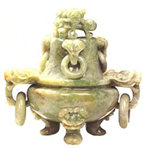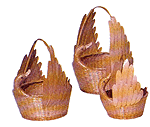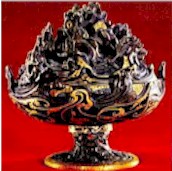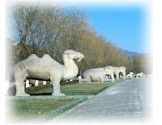|
|
| back | Chinese Jade
Carving China's continuous interest in jade carving is unmatched in the rest of the
world. The earliest known carved jades were made in China during the Neolithic period
(4000?-2000? BC). The discovery of a tomb from the Shang dynasty (1766?-1027? BC) yielded
jade plaques depicting dragons and birds, along with sculptures of human figures. With the
use of the iron drill, artists of the Zhou dynasty (1027?-256 BC) produced increasingly
sophisticated carvings. During the Han dynasty (206 BC-AD 220) corpses were encased in
suits made of thousands of rectangular pieces of jade, sewn together with gold thread. (see development history) China's continuous interest in jade carving is unmatched in the rest of the
world. The earliest known carved jades were made in China during the Neolithic period
(4000?-2000? BC). The discovery of a tomb from the Shang dynasty (1766?-1027? BC) yielded
jade plaques depicting dragons and birds, along with sculptures of human figures. With the
use of the iron drill, artists of the Zhou dynasty (1027?-256 BC) produced increasingly
sophisticated carvings. During the Han dynasty (206 BC-AD 220) corpses were encased in
suits made of thousands of rectangular pieces of jade, sewn together with gold thread. (see development history)Following the Han dynasty small decorative forms of jade, often depicting animals, flowers, or children, remained popular. During the Qing period (1644-1911), large jade carvings attained great favor with the emperors and royal officials. Traditional design motifs and carving styles are still found in Chinese jade work.  The production of bamboo has had a
long history in china. Bambooware products cover workboxes,beds, mats,tablets, buckets,
and baskets of varied size for daily use or production.
|

 The different kinds of utensils used in
the tea ceremony first came from China. When the etiquette was not yet established these
utensils were tea bowls, flower containers, and hanging scrolls. When the etiquette of the
tea ceremony was laid down in the 15th century several other utensils became
necessary
The different kinds of utensils used in
the tea ceremony first came from China. When the etiquette was not yet established these
utensils were tea bowls, flower containers, and hanging scrolls. When the etiquette of the
tea ceremony was laid down in the 15th century several other utensils became
necessary